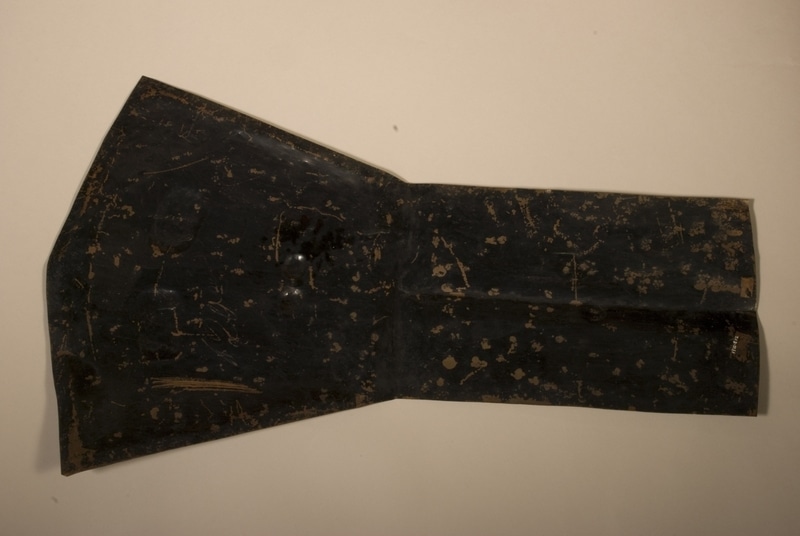Copper Item Number: E 1910.12 from the MAA: University of Cambridge


Description
A large copper the surface of which has been painted black and a design has been scratched through the paint revealing the copper below. The design is distributive, and therefore hard to identify with certainty.; Good
Context
The narrow bottom section of the copper, and the arched top section, together with the extension of the design onto the sides of the T-shaped ribs, suggests this copper was from the southern coast, possibly Kwakiutl. Also the design is not substantially incised but has been scratched at some point to renew the detail (G.Crowther). The original European tribal names and, where possible, current tribal names have both been given in separate GLT fields.; The copper was a symbol of wealth and prestige, and was often known to have a value, calculated in numbers of blankets. Coppers were displayed by chiefs at potlatches, and some were destroyed as acts of ultimate status competition. The Kwakiutl in particular cut pieces from coppers and presented them to rivals, the pieces were eventually returned, with interest and riveted back onto the copper which increased its value, and the wealth and prestige of its owner. This particular copper doesnot appear to have been cut and reassembled, suggesting it may have been a recent example which had not been used at too many potlatches, which were banned at this time. Coppers often were named after the creatures depicted (G.Crowther).
Item History
- Made in British Columbia, Canada
- Received from Dr. J.W.L. Glaisher during 1910
What
- Name
- Copper
- Identification Number
- E 1910.12
- Type of Item
- copper
- Material
- metal and copper metal
Who
- Culture
- Kwakwaka'wakw
- Received from
- Dr. J.W.L. Glaisher
Where
- Holding Institution
- MAA: University of Cambridge
- Made in
- British Columbia, Canada
When
- Acquisition Date
- during 1910
Other
- Keyword
- Currency; Ceremonial Objects